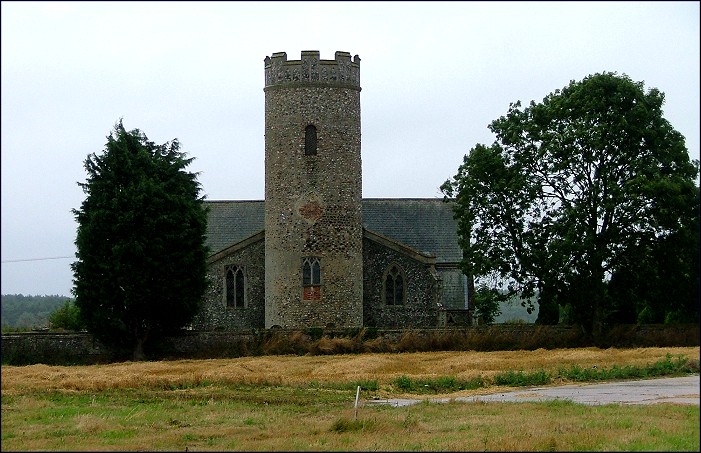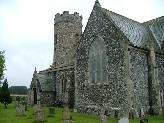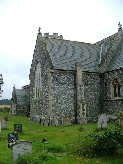
home I index I latest I glossary I introductions I e-mail I about this site
St Peter, Haveringland

Read
the captions by hovering over the images, and click on them to
see them enlarged.



| St Peter,
Haveringland Oh what a bleak place! On reflection I was glad we had come here in the middle of a storm, as it suited what I am sure is the true flavour of the place. It wasn't something I enjoyed at the time; it was bucketing down as we left Brandiston, a mile or so off, and then we could see St Peter way out in the middle of the old airfield, a broken wartime runway threading the half mile or so to it from the road between bleak rutted fields. The wind was immense, and a large sign said Keep Out, adding as an afterthought No Dogs. As Jacquie observed, did they assume the first instruction would be ignored, or was this to stop people sending their pets in on a reconnaisance mission? Or did the Keep Out bit only apply to dog owners? Whatever, we headed on past it, assuming that the landowner would at least give us a warning before shooting. I always want to remind people that trespass is a civil offence, not a criminal one, and then offer them a card with my name and address on it and suggest that they sue me - mind you, I'm not sure I'd have the nerve to do this while looking down the barrels of a gun. The storm swept across the empty wastes as we cycled precariously over the shattered concrete. I had read in Pevsner's 1999 edition that this church was redundant, but when we reached the walled churchyard it was like a little oasis, a fondly tended garden surrounding the tidiest of 19th century rebuilds, and there were notices indicating that the church was still in use. As is usual, the Victorians had observed the letter of building in flint here rather than the spirit, creating a somewhat anodyne, antiseptic feel. I am fond of 19th century interiors, and would have liked to have seen inside; but the church was locked, and although churchwardens were listed (the church is, after all, still part of the local benefice) we really couldn't face cycling several miles in the storm and back just to see inside a building which no one seems to find anything interesting to say about. There's still the old font inside, and the Norman round tower is the only surviving old bit of the building - everything else was rebuilt in 1858 at the expense of the Big House, and even the tower has been elaborated. But that's it, apparently. Perhaps I will be fortunate enough to return here on a bright summer day, and the fields all about will be full of something beautiful like sunflowers or maize. Or perhaps not. Below, there are photographs which John Salmon took, which appear to show a rather charming, silent place. Simon Knott, September 2005
Amazon commission helps cover the running costs of this site.
home I index I latest I introductions I e-mail I about this site I glossary |